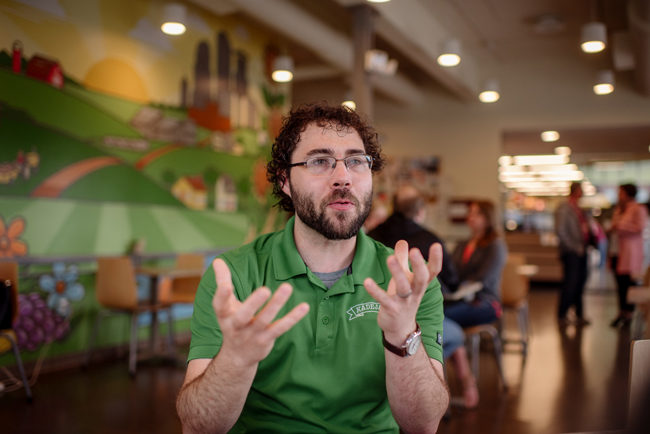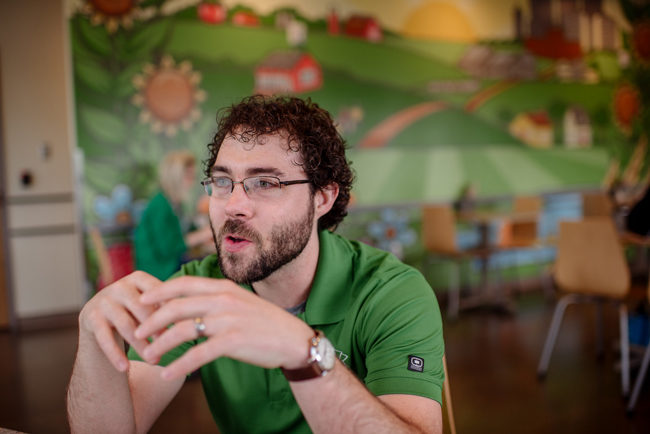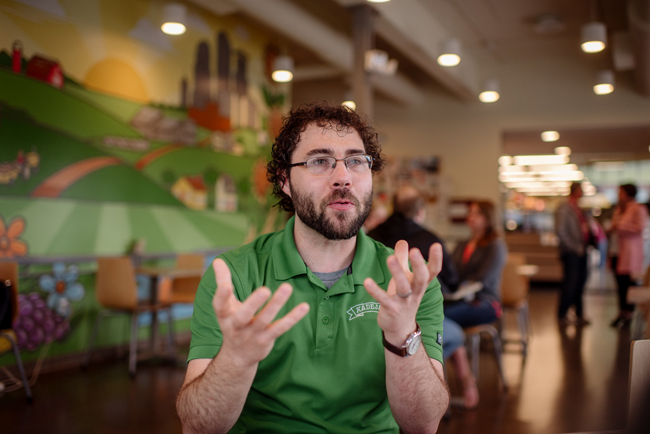
This story is a product of Heavy Table’s first Listening Session, underwritten and hosted by the Lakewinds Food Co-op. On May 23, we interviewed 15 local food artisans over the course of eight hours, with a goal of taking a snapshot of the vibrant Minnesota food scene.
“Chefs really like our birds. It’s a good-quality blank canvas,” says Weston Gienger. Gienger wears the marketing hat (among others) for Kadejan, a Glenwood-based company that raises and sells less than 500,000 chickens a year. If you shop at co-ops or dine at restaurants with a farm-to-table connection, you’ve probably seen their birds. The 30-employee company has developed a statewide reputation that has elevated it to among the biggest of the small guys (or the smallest of the big guys, depending upon how you’re measuring your flock sizes).
“They have a different flavor and texture because they don’t have as high a fat content as other birds,” says Gienger. “We don’t try to pump up weight and add fat to the bird. And texturewise, it’s different because we air chill. We’ve been air chilling since ’89. That really sets us apart. It’s not a forced-air blast; it’s more that they’re put into a big, oversized refrigerator. It’s like curing beef. It dries it out a little more, and lets it age. It locks in the natural flavor and texture of the chicken.”

Kadejan got its start in 1989 as Pope County Poultry Processing, processing birds for local farmers. In the years that followed, in part due to encouragement from chefs such as Lenny Russo and support from co-ops including Mississippi Market, the company began wholesaling free-range, air chilled, antibiotic- and growth-stimulant-free chickens.
As the company has grown and evolved, so has the market. “Over the last five years, people have been asking a lot more questions,” Gienger says. “People call in asking how we raise the birds, how we feed the birds — a lot of people call in with allergy questions, too. People see the chicken industry, and they think we’re a big chicken company, but we’re not. We’re trying to convey that to them and approach questions with honesty and transparency. We don’t have to hide anything, and I like that about my job.”
Part of the story of Kadejan’s chickens — and with any animal raised for meat — is what the birds are fed. “We finish with a higher quality than a lot of places,” says Gienger. “We do organic oregano in with the feed — that we get from a guy in Princeton, Minn. We make sure the feed is fresh, and we use well water, too. For about four years now we’ve been working on our own feed mill. That’s going to be our next step, and the feed will be non-GMO. That’ll allow us to be more transparent and bring a higher quality to our product.”

“We have four growers; that’s it,” he says. “We’re a cage-free operation. We don’t try to control everything about the birds. We can hold up to 10,000 birds in a barn. We’re a clay floor operation, not concrete. We don’t treat and reuse our bedding when we clean the barn out. There’s a week between groups of birds. It helps with parasites, and it’s cleaner. We clean it out, scrape down to the clay, and put new clay in if we have to.”

Whenever we talk to someone who is deeply embedded in a food industry, we ask them about their favorite way to eat their product. For Gienger, it’s a Thai chicken pizza with peanut sauce, “good quality bacon,” Havarti cheese, green onions, and cilantro. “I could eat that right now,” he says.


Through the years, Kadejan’s chickens have become our gold standard. Any other brand we buy (“Amish” chicken, etc.) has to hold up to them. We haven’t found anything better. Even guests of ours who are used to eating 69-cent-a-pound factory birds notice (and appreciate) the difference in Kadejan chicken dishes we serve them. I’m glad they care so much to produce a great chicken.